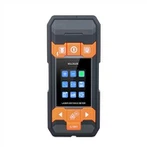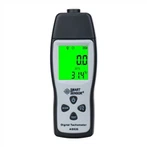Meaning of the weighting of sound level meters
Signal Noise Ratio (SNR) is the ratio of useful signal power to unwanted noise power.
is the ratio of useful signal power to unwanted noise power. It is usually measured in decibels. Since power is a function of current and voltage, the signal-to-noise ratio can also be calculated from the voltage value, i.e. the ratio of the signal level to the noise level, with a slightly different formula. Calculate the signal-to-noise ratio in terms of power: S/N=10 log Calculate the signal-to-noise ratio in terms of voltage: S/N=10 log Because the signal-to-noise ratio and power or voltage are logarithmic, to improve the signal-to-noise ratio, it is necessary to significantly increase the output value and the ratio of the noise value, for example: when the signal-to-noise ratio is 100dB, the output voltage is 10,000 times the noise voltage to the electronic circuits, this is not an easy thing.
If an amplifier has a high SNR, it means that the North View is quieter, and because the noise level is low, many details of the weak sounds that are hidden by the noise will be revealed, resulting in an increase in floating sounds, a stronger sense of air, and an increase in the dynamic range. There is no strict data to judge whether the signal-to-noise ratio of an amplifier is good or bad, generally speaking, it is better to be about 85dB or more, and below the longitude value, it is possible to hear obvious noise in the music gap in some loud listening situations. In addition to the signal-to-noise ratio, the measurement of amplifier noise size can also be used in the concept of noise level, which is actually a voltage to calculate the signal-to-noise ratio value, but the denominator is a fixed number: 0.775V, while the numerator is the noise voltage, so the noise level and the signal-to-noise ratio of the respective: the former an absolute number, the latter is a relative number.
In the product manual in the specification table behind the data, there will often be a A word, meaning A-weight, that is, A weighting, weighting means that a certain value according to certain rules weighing the importance of the modification, because the human ear is not sensitive to the mid-frequency, so if an amplifier in the mid-frequency band signal-to-noise ratio is large enough then, even if the signal-to-noise is lower than the low-frequency and high-frequency bands, the human ear is not easy to detect. It can be seen that if the signal-to-noise ratio is measured with weighting, the value will be higher than without weighting. In the case of A-weighting, the value is higher than without weighting.
In addition, in order to simulate the sensitivity of the human ear at different frequencies, there is a network within the sound level meter that can simulate the auditory characteristics of the human ear, correcting the electrical signal to an approximate value of the auditory sensation, which is called a weighting network. The sound pressure level measured by the weighting network is no longer the objective physical sound pressure level (called linear sound pressure level), but the sound pressure level corrected by the sense of hearing, called the weighted sound level or noise level.
There are generally three kinds of weighting networks, A, B and C. A-weighted sound level is to simulate the frequency characteristics of low intensity noise below 55dB for the human ear, B-weighted sound level is to simulate the frequency characteristics of medium intensity noise from 55dB to 85dB, and C-weighted sound level is to simulate the frequency characteristics of high intensity noise. The main difference between the three is the degree of attenuation of low-frequency components of noise, with A attenuating * more, B the second, and C * less. A-weighted sound level is widely used in noise measurement in the world because its characteristic curve is close to the auditory properties of the human ear, and B and C have been gradually not used.





